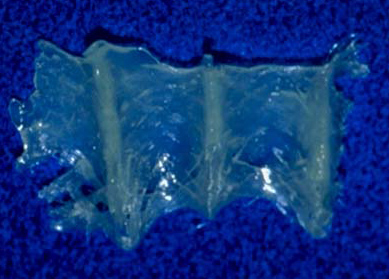Fiber Comparison

Ribbond's success has led to the introductions of other fiber reinforcements. Although many manufacturers have tried to imitate Ribbond, none of them has proven themselves equal to Ribbond. Published independent evaluations and respected educators indicate a preference for Ribbond over the other fiber reinforcements. Ribbond is the most fracture tough dental fiber reinforcement available to the dental industry and also has the best manageability. This results in the longest lasting and most comfortable prostheses for your patients.
Please see this video that describes the differences between Ribbond and other reinforcements:
Watch the video
Superior manageability and best ease of use
Ribbond combination of patented leno weave and flexible ultra-high molecular weight polyethylene fibers provides Ribbond unique manageability characteristics. Ribbond has virtually no memory and does not unravel when placed against the teeth. This allows you to places the fibers closely against the teeth and results in thin and comfortable prostheses for your patients.
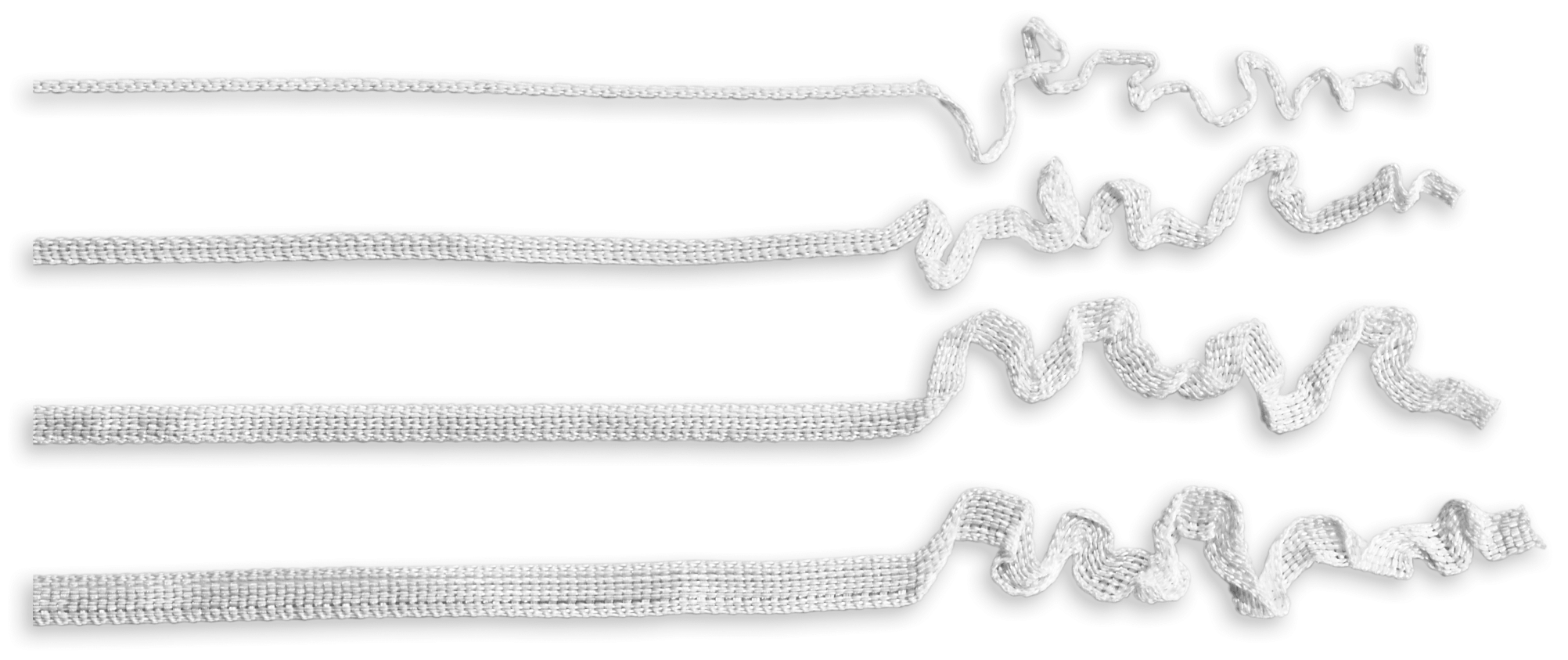
Easy to adapt - Virtually no memory
(photo not to scale)
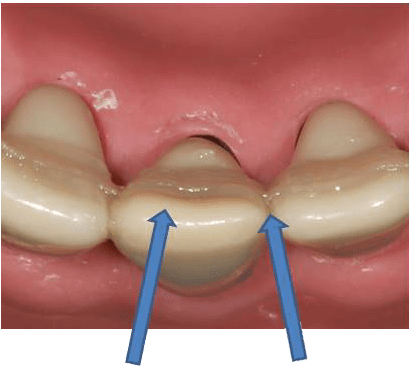
Ribbond's superior manageability allows for comfortable prostheses with thin bond lines.
Thin bond lines equals greater clinical longevity
Bonding the fibers closely against the teeth not only results in thin and comfortable prostheses for your patients but also maximizes the laminate effect. A fiber-reinforced composite is strong when the fiber is laminated closely to the teeth but prone to cohesive failure of the resin when the fiber is not closely adapted to the teeth. An example of this laminate phenomenon is the strength of a porcelain veneer when laminated closely to a tooth. This also explains why a carpenter uses clamps to glue two pieces of wood together. Using clamps results in a thin layer of glue between the two pieces of wood. If there was a thick layer of glue then fracturing within the glue layer would be the expected mode of failure.
Patented leno weave
Ribbond's patented cross-link lock-stitch leno weave provides unsurpassed manageability without compromising its multi-directional integrity and its ability to reinforce the composite resin. The leno weave mechanically interlocks the threads together and prevents slippage of the fibers within the resin. This prevents the fibers from unravelling when adapted and also provides fracture toughness by preventing crack propagation with the resin matrix between the fibers.

Ribbond's Leno weave
Documented History of Success
Ribbond leads the field in published articles and studies. Ribbond has a proven record of success dating back to 1992. For the most up-to-date bibliography of articles and studies featuring Ribbond, please contact us. Many of these articles are also available upon request.
Biocompatibility
Unlike fiberglass, if at any time the Ribbond is cut into with a rotary instrument, the resultant particles and exposed fibers will not be a biocompatibility risk to the patient.
Indefinite Shelf Life
Ribbond has an indefinite shelf life and does not require refrigeration, maximizing cost effectiveness.
Ribbond Fibers vs Glass Fibers
Glass fibers are stiff and are difficult to use
Glass fibers are stiff and have a lot of memory. They do not adapt closely to the contours of the teeth resulting in thick and uncomfortable prostheses for your patients and result in thick bond lines that compromise clinical longevity.
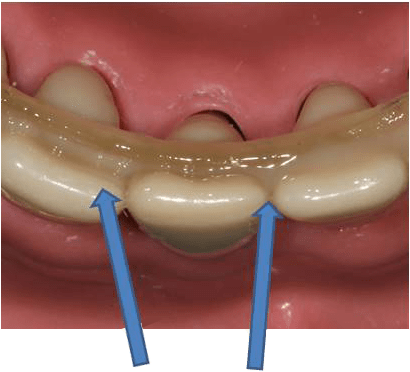
Glass Fibers result in thick bond lines.

Ribbond's superior manageability allows for comfortable prostheses with thin bond lines.
Glass fibers lack fracture toughness
The same ultra-high molecular weight polyethylene fibers used to make Ribbond are used to make bullet proof vests and light-weight armor plating for military aircraft. Glass fibers are not used for similar industrial applications for obvious reasons. Glass fibers are brittle and are not fracture tough. This video shows how simply repeatedly bending glass fibers leads to fiber fractures. As you can see Ribbond is much more fracture tough.
Glass fiber configurations
Glass fibers are not fracture tough and their fracture resistance is even more compromised when sharply bent. Most glass fiber manufacturers offer either unidirectional fiber orientations or standard over-under braids. These configurations lack effective inter-locking mechanisms from one thread to the next, which further compromises their multidirectional fracture toughness.
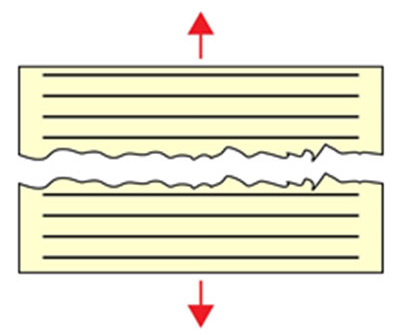
Unidirectional fibers lack multi-directional fracture toughness
Glass fiber reinforcements have a shelf life
Most glass fiber reinforcements have a shelf life which leads to unnecessary waste.
Loosely Braided Material
Loosely braided materials unravel and spread apart when adapted to the teeth. This creates a bulky and uncomfortable prostheses for your patients. Loosely braided materials also lack a mechanical interlocking of one fiber to the next, which comprises its fracture toughness. These loosely braided fibers result in bulky and uncomfortable prostheses.
Competitor's braided weave
Ribbond’s superior manageability and superior fracture toughness provides the most clinically dependable fiber reinforcement on the market. Click to read more…
